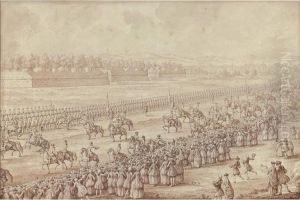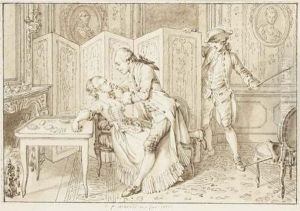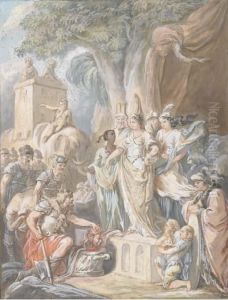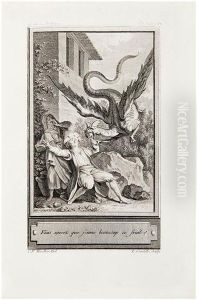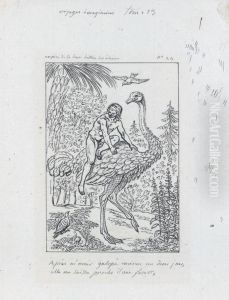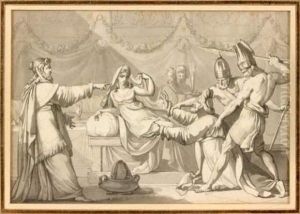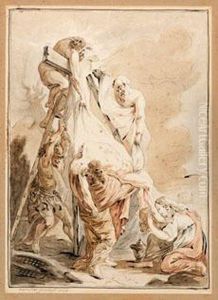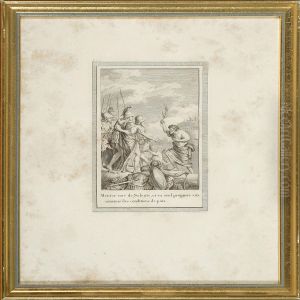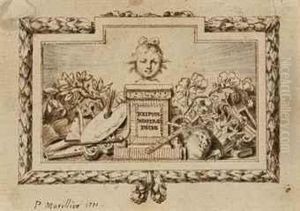Clement Pierre Marillier Paintings
Clement Pierre Marillier was a French draughtsman and engraver, born in Dijon, France in 1740. His artistic journey began under the tutelage of François Devosge at the drawing school in Dijon, which laid the foundation for his skill in draughtsmanship. He later moved to Paris to further his career and became a student of the renowned painter and engraver, Charles-Nicolas Cochin.
Marillier was active during a period of significant cultural and social change in France, which included the years leading up to and including the French Revolution. Despite the tumultuous times, he managed to carve out a successful career as an illustrator. He became well-known for his book illustrations, which were celebrated for their clarity and elegance. His work contributed to the popularization of literary works by providing visual representations that complemented the narratives.
One of the notable aspects of Marillier's career was his involvement with the famous books of his time. He produced illustrations for a wide range of texts including classical literature, contemporary fiction, and works of philosophy. His engravings for the edition of Ovid's 'Metamorphoses' and Boccaccio's 'Decameron' are particularly admired for their refined execution and imaginative composition.
Throughout his life, Marillier maintained a commitment to the neoclassical style, which was characterized by a return to classical antiquity's simplicity, harmony, and proportion. This was in contrast to the more ornate and elaborate Rococo style that preceded it. His works often contained elements of mythology and allegory, which were popular themes in neoclassical art.
Clement Pierre Marillier's contribution to French art was not limited to his engravings and illustrations. He also played a role in the development of the arts through his membership in various art societies, including the Académie de Dijon. His influence extended to a number of pupils who became notable artists in their own right.
Marillier passed away in Paris in 1808, leaving behind a legacy of work that continues to be appreciated for its beauty and historical significance. His engravings remain a testament to the neoclassical movement and are still studied by art historians and enthusiasts today.
